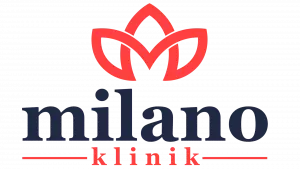Craniosynostosis is a malformation of the head at birth caused by the bones in the skull merging too early. In addition to disfigurement, it hinders the baby’s mental development and leads to loss of function. This head deformity can be treated early with craniosynostosis surgery. It isn’t condition that can be interfered with in the womb. Surgery can only be performed after the birth. In this way healing can be achieved. With early treatment, the baby can go through the healing process by minimally experiencing the effects of the head deformity.Babies’ skulls are made up of five bones. When the nodes of one or more of these bones close earlier than normal, craniosynostosis occurs. The skull bones, which are connected by separate joints called sutures, close due to the craniosynostosis. This shutdown prevents the baby’s brain development. In addition, in some cases, craniosynostosis can also lead to increased pressure in the head.
Often the factors that cause craniosynostosis are unclear. Still, there are some risk factors. In some people with this condition, genetic abnormalities are the cause. In some cases the influence of environmental factors can cause the condition. Medications used during pregnancy, mother’s eating habits, maternal thyroid disease, or a combination of all of these factors can cause craniosynostosis. In addition, vitamin D deficiency and premature connective tissue closure can also lead to craniosynostosis.In a healthy baby, the fontanelle closes between 12 and 18 months. This period can be extended up to 24 months for some babies. Rarely, anterior and posterior fontanelles are seen together in some babies. This must be closed by the end of the third month at the latest.
Why is the closing speed of the fontanelles important? Premature closure of the fontanelle can cause various health problems in the baby. The fontanelle, which closes early in babies, prevents the brain from developing. It also causes craniosynostosis, which leads to loss of function. With craniosynostosis, intracranial pressure increases, causing problems in the basic senses, especially sight and hearing. This problem, which causes mental health problems, can be overcome with craniosynostosis surgery. It is just as important that treatment takes place in a safe and attentive environment.Symptoms of Craniosynostosis usually appear after birth. If the seam is not completely closed, it may be noticed too late. Most cases occur after birth and it will be visible in a couple of months. Points such as the sections where the seams are closed and how many seams are closed can vary from baby to baby. In cases where a seam is closed, however, brain development may continue. Only in this case can skull anomalies appear. Depending on the craniosynostosis, deformities can be recognized not only on the skull, but also on the eyes, ears and nose. The deformities observed with craniosynostosis surgery can be brought back to their normal shape. Craniosynostosis varies depending on the points where the fontanelle is closed. There are four types of craniosynostosis: sagittal suture synostosis, methopic suture synostosis, coronary suture synostosis, and lambda suture synostosis.
Sagittal suture synostosis, the most common among the types, causes scaphocephaly. Scafosephaly is the appearance of the head that extends from front to back. The forehead is dislocated and the side bones adapt to the protrusions. The anterior and posterior bones of the skull create a sharp image.
There is a pit in the middle of the skull. Trigonocephaly and methopic suture synthosis, also called triangular skull, are a condition in which the head height is greater than normal. The distance between the eyes of babies with this disease is small. The head and forehead have a sharp appearance. Early closure of the coronal suture leads to coronal synostosis. This type can be unilateral or bilateral.
A unilateral coronal synostosis leads to a displacement of the eye and forehead structure in the direction of the affected part of the head. The eye and eyebrow that are on the affected side are significantly higher. In addition to this condition, there may be dislocations in the nose and ears. In bilateral coronal synostosis, also known as brachycephaly, the head is broad at the edges and the forehead protrudes.
The height of the head increases and the eyes move apart. The rarest type of craniosynostosis is lambda suture synostosis. This type causes skull asymmetry. Skulls of the babies with this type of craniosynostosis makes a visible difference from the front and back, and is inclined to the right or left. A flattening can be seen on the affected part of the skull. Craniosynostosis surgery demonstrates a suitable approach to the type of craniosynostosis that will develop in the baby. The baby maintains its health and natural aesthetic appearance.
You can have correctly done and beautiful plastic surgeries and other body aesthetic operations with the quality of Milano Klinik, which cares about your health and safety.
You can read our previous article from https://www.milanoklinik.com/en/what-is-the-best-season-for-plastic-surgery/


